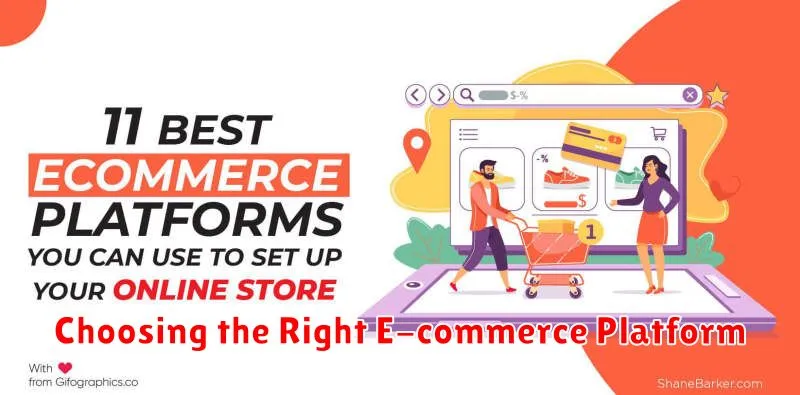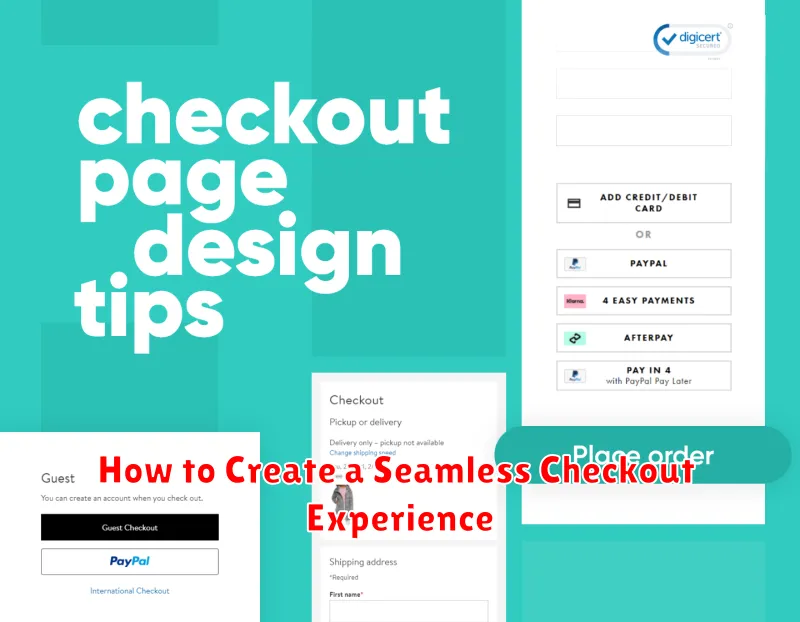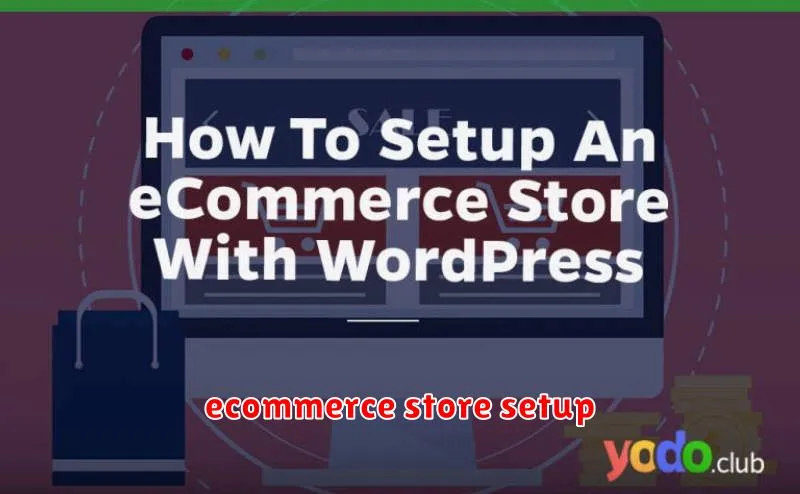Building your own e-commerce store from scratch can seem daunting, but with the right approach, it’s achievable. This comprehensive guide will walk you through every step, from choosing the ideal e-commerce platform and designing an engaging online store to mastering digital marketing strategies for increased sales and building a loyal customer base. We’ll cover essential topics like website development, inventory management, payment gateway integration, and customer relationship management (CRM), empowering you to create a successful and profitable online business. Learn how to navigate the complexities of building an e-commerce website and unlock the potential of the digital marketplace.
Choosing the Right E-commerce Platform

Selecting the right e-commerce platform is crucial for your online store’s success. Your choice will significantly impact scalability, functionality, and overall costs.
Consider factors like your budget, the size and complexity of your inventory, your technical skills, and your future growth plans. A simple platform might suffice for a small business with limited products, while a larger enterprise might need a more robust and scalable solution.
Hosted platforms like Shopify or Wix offer ease of use and require minimal technical expertise. They handle hosting, security, and updates, but may have limitations on customization and control. Self-hosted platforms like Magento or WooCommerce provide greater flexibility and customization, but demand more technical knowledge and ongoing maintenance.
Evaluate each platform’s features, including payment gateway integrations, marketing tools, inventory management capabilities, and customer relationship management (CRM) integration. Read reviews and compare pricing models before making a decision. Choosing the right platform from the start can save time, money, and headaches in the long run.
Designing a User-Friendly Online Store
Designing a user-friendly online store is crucial for success. A poorly designed site leads to high bounce rates and lost sales. Prioritize a clean, intuitive layout with easy navigation.
Clear product categorization is essential. Customers should easily find what they’re looking for. Use descriptive category names and consider a faceted search for advanced filtering options.
High-quality product images are paramount. Use multiple images from different angles, and consider zoom functionality. Include detailed descriptions that highlight key features and benefits.
A simple and secure checkout process is vital. Minimize the number of steps involved and clearly display all costs upfront. Offer multiple payment options for customer convenience. Ensure SSL encryption for secure transactions.
Mobile responsiveness is a must. Your store needs to work flawlessly on all devices. Test thoroughly on various screen sizes and browsers.
Incorporate clear calls to action (CTAs) throughout the store. Use compelling language to encourage purchases and guide users towards desired actions. For example, strategically place “Add to Cart” buttons and prominent “Buy Now” options.
Finally, provide excellent customer support. Make contact information readily available and offer multiple support channels such as email, live chat, and a frequently asked questions (FAQ) section.
How to List and Optimize Products for SEO

Listing and optimizing products for SEO is crucial for e-commerce success. Begin with thorough keyword research to identify terms customers use when searching for your products. Use these keywords naturally throughout your product listings, including the title, description, and meta description.
Optimize product images with descriptive file names incorporating keywords. Ensure images are high-quality and properly sized for fast loading. Use alt text for all images, describing the product accurately and including relevant keywords.
Write compelling and informative product descriptions. Focus on benefits, not just features. Use a mix of short and long-tail keywords. Include details about materials, dimensions, and care instructions.
Structure your website with clear navigation and a logical hierarchy. Use internal linking to connect related products and categories. This helps search engines understand your website’s structure and improves product discoverability.
Monitor your search engine rankings and website analytics regularly. Use this data to refine your product listings and identify areas for improvement. Adapting your SEO strategy based on data analysis is crucial for continuous growth.
Finally, consider building high-quality backlinks to your product pages from reputable sources. This strengthens your website’s authority and boosts your rankings in search results.
Setting Up Secure Payment Gateways
Setting up secure payment gateways is crucial for any e-commerce store. Security is paramount to build customer trust and prevent fraud. Choosing a reputable gateway that complies with PCI DSS standards is essential.
The process typically involves creating an account with a payment gateway provider (e.g., Stripe, PayPal, Square). You’ll need to provide business information and potentially undergo a verification process. After approval, you’ll receive API keys and integration instructions.
Integrating the gateway into your e-commerce platform usually involves using their provided SDKs or APIs. This allows your website to securely process payments without directly handling sensitive customer data. Thorough testing is crucial to ensure seamless transactions before launching your store.
Consider factors like transaction fees, supported payment methods, and customer support when selecting a payment gateway. The right choice will significantly impact your store’s success and customer satisfaction.
How to Create a Seamless Checkout Experience

A seamless checkout experience is crucial for converting browsing customers into paying customers. A complicated or frustrating checkout process can lead to high cart abandonment rates.
To achieve this, minimize the number of steps involved. The fewer fields customers need to fill, the better. Consider using a guest checkout option to reduce friction. Pre-fill forms where possible using saved customer data (with their permission).
Offer multiple payment options to cater to diverse customer preferences. Include popular methods like credit cards, PayPal, Apple Pay, and Google Pay. Clearly display all applicable fees and taxes upfront to avoid surprises.
Provide clear and concise order summaries at each stage of the checkout process. Allow customers to easily review their items, shipping address, and payment information before finalizing the purchase. Implement a progress indicator to visually guide users through the process.
Ensure mobile responsiveness. Your checkout process should be equally user-friendly on desktops, tablets, and smartphones. Test thoroughly on various devices to ensure optimal performance and a consistent experience across platforms.
Finally, implement robust security measures to build trust and protect customer data. Display security badges and clearly communicate your privacy policy. Offering live chat support during checkout can address any immediate customer concerns and assist with the process.
Best Practices for Shipping and Fulfillment
Setting up efficient shipping and fulfillment is crucial for e-commerce success. Competitive shipping rates are key to attracting customers, so research various carriers and negotiate rates if possible. Offering a variety of shipping options, including standard, expedited, and potentially same-day delivery, caters to diverse customer needs.
Order accuracy is paramount. Implement robust inventory management systems to prevent errors and ensure products are correctly picked, packed, and shipped. Clear, concise packaging and labeling are also essential for a smooth delivery process and to minimize returns caused by damage or misdirection.
Real-time tracking provides customers with peace of mind and keeps them updated on their order status. Integrate a reliable tracking system into your platform. Streamlined returns are equally important; a user-friendly returns process demonstrates commitment to customer satisfaction and minimizes negative feedback. Consider offering free or low-cost returns to improve customer experience.
Finally, choosing the right fulfillment method is vital. Starting with in-house fulfillment might be suitable for smaller businesses, but as your business grows, outsourcing to a third-party logistics (3PL) provider can significantly improve efficiency and scalability.
Managing Orders and Customer Support
Efficient order management is crucial for a successful e-commerce store. A streamlined process, from order placement to delivery, ensures customer satisfaction and minimizes operational issues. Consider using an order management system (OMS) to automate tasks like inventory tracking, order fulfillment, and shipping label generation. Integrating your OMS with your e-commerce platform simplifies the workflow and reduces manual errors.
Excellent customer support is paramount. Proactive communication keeps customers informed about their orders. Multiple channels for support, such as email, phone, and live chat, should be available to address customer queries promptly and effectively. A knowledge base or FAQ section can preemptively answer common questions, reducing support tickets. Addressing customer concerns quickly and professionally builds trust and loyalty.
Tracking metrics such as order fulfillment time, customer satisfaction scores (CSAT), and Net Promoter Score (NPS) provides valuable insights into the effectiveness of your order management and customer support processes. Regularly analyze these metrics to identify areas for improvement and refine your strategies.
Scaling Your E-commerce Business
Scaling an e-commerce business requires a strategic approach focusing on several key areas. Inventory management is crucial; accurately forecasting demand and optimizing stock levels prevents both overstocking and stockouts. Efficient order fulfillment processes, including streamlined warehousing and shipping, are essential for timely delivery and customer satisfaction.
Marketing and advertising play a significant role in growth. Diversify your channels, exploring options like social media marketing, search engine optimization (SEO), and paid advertising to reach a wider audience. Analyzing customer data and using it to personalize marketing efforts is vital for increased engagement and conversion rates.
Investing in the right technology is paramount. A robust e-commerce platform capable of handling increased traffic and orders is necessary. Consider integrating tools for inventory management, customer relationship management (CRM), and marketing automation to streamline operations and improve efficiency. Regularly monitoring key performance indicators (KPIs) such as conversion rates, average order value, and customer acquisition cost provides valuable insights into areas needing improvement.
Finally, building a strong team is vital. As your business grows, you’ll need skilled individuals to handle different aspects of the operation. Hiring and training capable employees is essential for maintaining high standards of customer service and operational efficiency. Scaling successfully requires a combination of smart planning, efficient processes, and a dedicated team.

